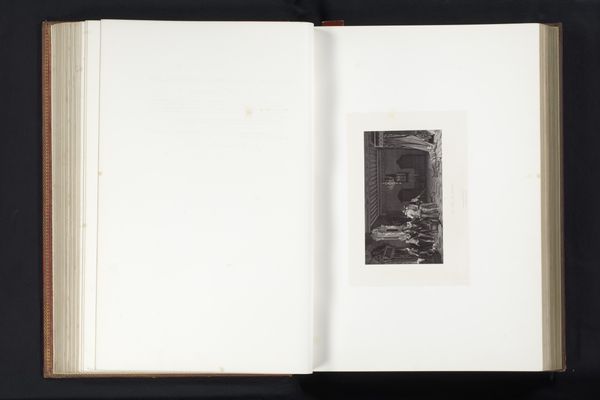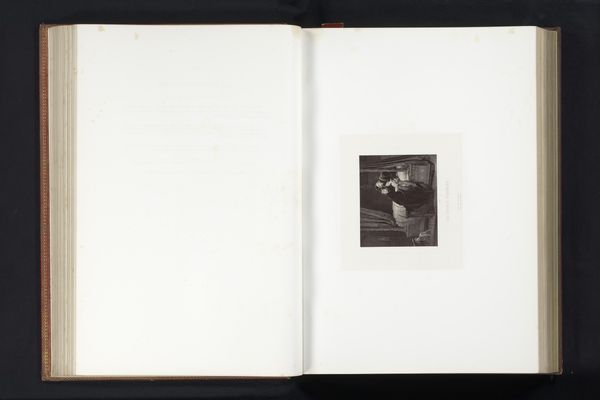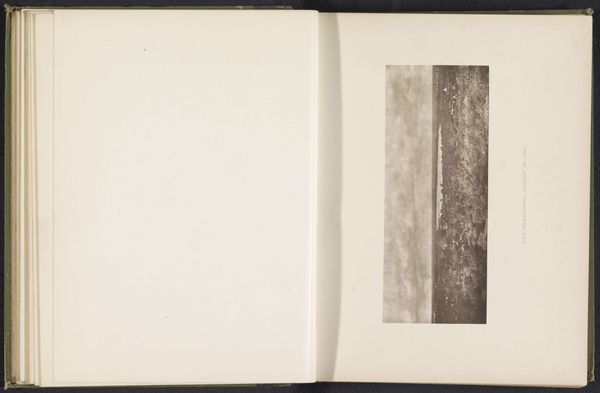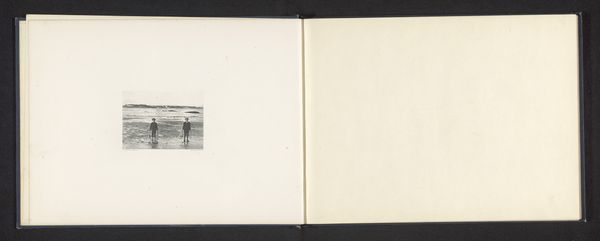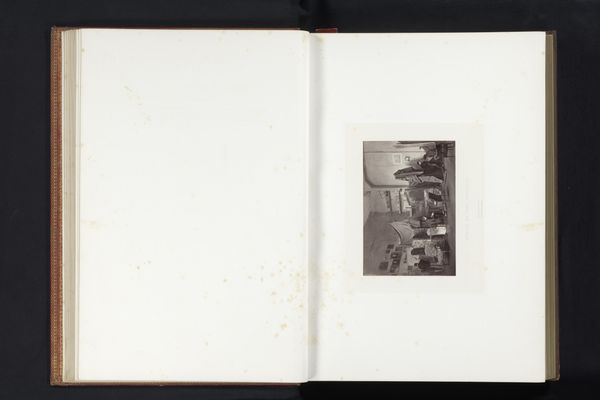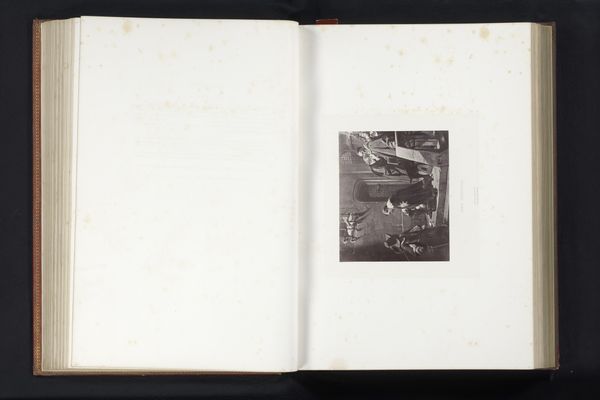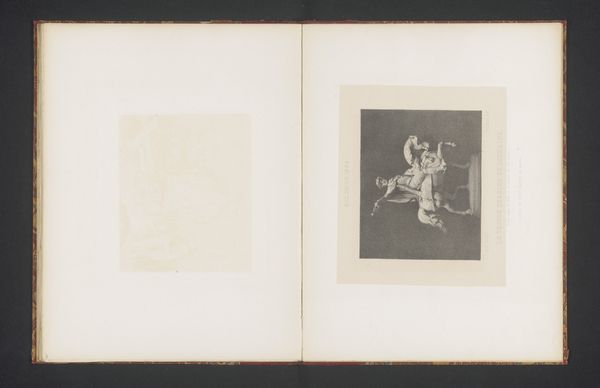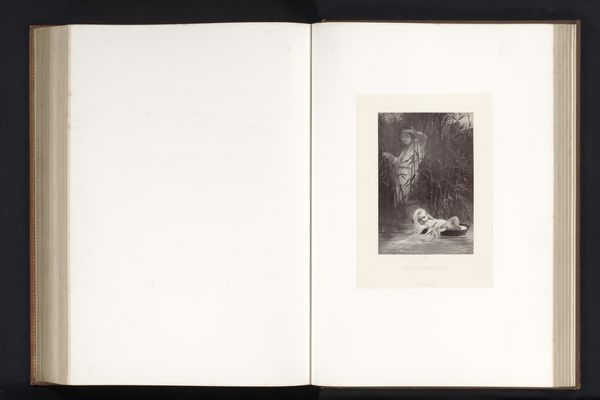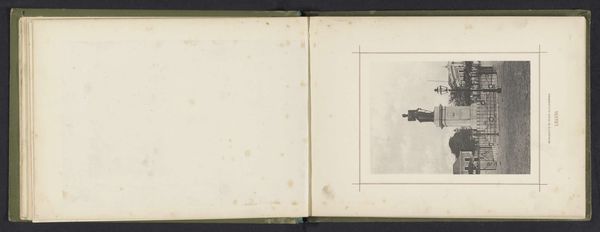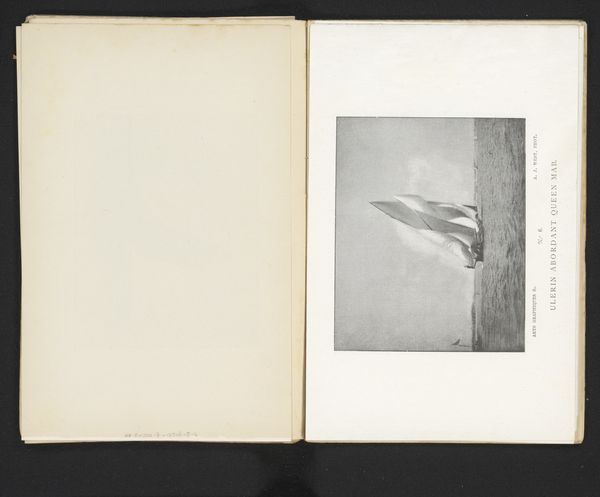
Dimensions: support: 300 x 783 mm
Copyright: © Tom Phillips | CC-BY-NC-ND 4.0 DEED, Photo: Tate
Editor: This is Esq Tom Phillips’ "The Source of the Dove" at the Tate. It's intriguing; three panels, each with a tiny image or text. What strikes me is the handmade quality, the stark contrast. What do you see in the method that might tell us more? Curator: Consider the book form itself, the paper, the ink. Phillips, known for his altered books, recontextualizes existing materials. It speaks to a kind of repurposing, a commentary on mass production versus individual labor. How does this 'source' relate to the act of creation itself, the manual processes involved? Editor: So, the 'source' isn't just the subject matter, but also the materials and the artist's hand? It's more about how it's made than what it depicts? Curator: Precisely. It challenges the traditional art world’s focus on the finished product, emphasizing instead the often-invisible processes of production and their social implications. Editor: That’s a cool perspective. I'll never look at a book the same way again. Curator: Indeed. The book, a simple yet complex object, is transformed into a meditation on labor and creativity.
Comments
tate 6 months ago
⋮
http://www.tate.org.uk/art/artworks/phillips-the-source-of-the-dove-p78489
Join the conversation
Join millions of artists and users on Artera today and experience the ultimate creative platform.
tate 6 months ago
⋮
The Source of the Dove by Tom Phillips is one of the eight printed works in Tetrad Pamphlets Vol.II. Tetrad Pamphlets consists of eight fold-out paper pamphlets in a grey cardboard box. The pamphlets occupy the middle ground between artist's book and free-standing print work. They were printed in an edition of one hundred and twenty five and the Tate copy is unnumbered and unsigned. The box also included work by Ian Tyson (born 1933), Jerome Rothenberg (born 1931), Richard Johnny John (dates unknown), Ian Breakwell (born 1943), Richard Pinkney (born 1938), Donato Cinicolo (dates unknown), Christian Wolff (born 1934) and Valerie Large (dates unknown). They were published by the small London based Tetrad Press from which they took their name. Tetrad Press also published a number of artist's books and collaborations, as well as an earlier volume of Tetrad Pamphlets. Volume I (Tate P01688-P01697) appeared in 1971, featuring ten works in pamphlet format by Derrick Greaves (born 1927), Tom Phillips, Richard Pinkney and Ian Tyson. Tetrad Press was founded in 1969 by the artist and publisher Ian Tyson for the purposes of developing a new relationship between contemporary art and literature. To begin with Tetrad concentrated on collaborations between visual artists and poets. The first work published was a five page folio, The 17 Horse Songs of Frank Mitchell X-X111 1969-70 (Tate P05258-P05261), a collaboration between Tyson and his close friend the American experimental poet Jerome Rothenberg. The press gradually broadened its scope to include musical scores, books, prose texts, and concrete poetry, as well as works by individual artists. The 1960s had seen a growing interest in the possibilities offered by printmaking techniques, and artists were keen to explore connections between word and image, literature and art. The artist's book offered another medium through which to explore these relationships. As Ian Tyson commented: 'it is partly the sequential nature of the book that interests me, the conception of the pages being each one a facet of the whole and that of the work being slowly revealed as one moves from one to the other.' (Quoted in unpublished Tate manuscript.) The Source of Dove, like Correspondence, Phillips's contribution to Tetrad Pamphlets Vol.I 1971 (Tate P01690) combines text and image. It consists of a pink folded card containing a three page white paper fold-out. In the centre of each page is a small, negative-sized square, each containing a different form of representation: a photograph, a drawing and a fragment of hand-written text. The central image is a faded, antique looking black and white photograph of a tree covered hillside. On the left is a cross-hatched, mirror reflection drawing of the central photograph. On the right a few scribbled words are reproduced on a fragment of card that has a clearly printed address along the side. Most of the script is illegible, but a few words such as 'good', 'dove' and 'stood' can be deciphered and it is possible they relate to the title of the work. Like much of the work Phillips was making at the time, The Source of the Dove juxtaposes text and image and reinterprets pre-existing, often mass-produced source material. In A Humument 1971-1976 (Tate P01490-P01529), a series of 400 screen prints published by Tetrad, Phillips re-worked A Human Document (1892) by W.H. Mallock (1849-1923), a late nineteenth century novel that he had found in a second hand book shop. Employing a collage technique, Phillips painted, drew and etched over the original text. Occasional words and sentences emerge to create poems, stories, language games and even musical scores. In Ein Deutsches Requiem: After Brahms 1972 (Tate P01539-P01549), also published by Tetrad, Phillips re-worked fragments of banal, contemporary German postcards. The representational postcard imagery was juxtaposed with Biblical quotations from the German Requiem (1868) by Brahms (1833-1897), and sections of text from A Humument. Discussing his work, the art historian and Tate curator Richard Morphet noted: 'Phillips comments in practical terms on that mutability of meaning inherent in all visual facts … His work is at once an obsessive translation of received material and an opening of that material to fresh interpretation.' (Morphet, p.1.) Tom Phillips continued to worked with Ian Tyson and the Tetrad Press until 1976 when he finished work on A Humument. At this time they were neighbours in Camberwell. Further Reading:Cathy Courtney, Speaking of Book Art: Interviews with British and American Book Artists, California 1999, pp.23-37Richard Morphet, Tom Phillips, exhibition brochure, Angela Flowers Gallery, London 1971Huston Paschal, Tom Phillips: Works and Texts, exhibition catalogue, Royal Academy of Arts, London 1992 Imogen Cornwall-Jones January 2002
